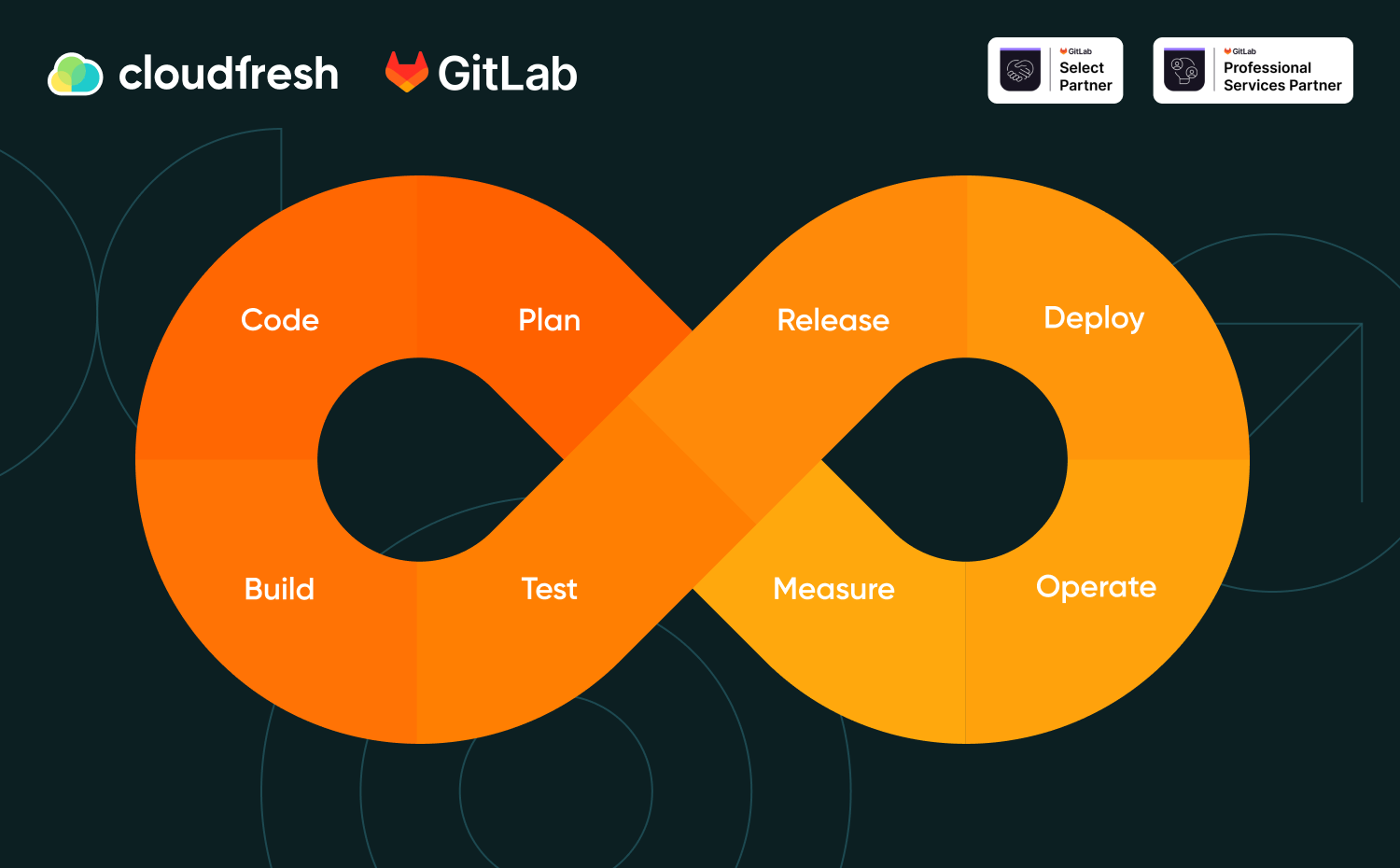DevSecOps: Integrating product security at every stage of the SDLC
10 Reasons Why CI/CD is Important for DevOps

The buzz around continuous integration/continuous delivery (CI/CD) is growing today. Needless to say, every organization (whether it’s a software company or not) should consider adopting a CI/CD model. It has become the cornerstone of building, testing, and deploying modern software and also lives up to the expectations of changing business dynamics.
So embrace the reality (and DevOps) and invest in creating the most efficient continuous integration and delivery pipelines possible. How to sell this strategy to management? Start by pointing out that your closest competitor is likely already taking advantage of continuous CI/CD.
What is CI/CD?
CI/CD, which stands for Continuous Integration and Continuous Delivery (or Continuous Deployment), is a software development practice characterized by the following key elements:
- Continuous Integration: This practice involves frequently merging code changes into a shared repository. After each code integration, automated tests are executed to ensure code quality and detect potential issues.
- Continuous Delivery: Building on Continuous Integration, Continuous Delivery automates the process of preparing code for deployment. This ensures that code is always in a deployable state and can be released at any time.
- Continuous Deployment: Going a step further, Continuous Deployment automatically deploys code changes into a production environment once they pass automated tests and quality checks. This approach eliminates manual intervention in the deployment process.
These practices are designed to enable development teams to deliver software more rapidly, reliably, and with fewer errors. They promote a streamlined workflow that enhances code quality and accelerates the delivery of new features and updates.
How does CI differ from CD?
Here is a slightly shortened explanation of the differences between CI, CD, and continuous deployment:
Continuous integration (CI) has developers frequently merge code changes into a shared repository throughout the day. Each change is automatically built and tested to catch issues rapidly.
Continuous delivery (CD) focuses on keeping software releasable by ensuring builds that pass testing can be released to production with minimal manual work.
Continuous deployment goes further by automatically releasing changes into production once builds pass testing. This enables extremely fast and frequent delivery of new features and fixes.
In summary, CI integrates and tests changes frequently to provide rapid feedback. CD uses automation to bridge the gap between CI and production deployments. Continuous deployment releases vetted changes automatically to production to accelerate delivery.
What is the role of CI/CD tools, and why are they so important?
CI/CD tools automate and connect the entire software delivery process. They build code, run tests, and deploy to environments in a consistent, repeatable way. This automation provides fast feedback, reduces errors, and allows rapid delivery of high-quality software.
Key benefits of Continuous Integration and Development:
- Build automation – Eliminates manual work and speeds up release cycles.
- Test automation – Catches defects early.
- Automated deployments – Allows push-button releases.
- End-to-end pipelines – Connects build, test, deploy stages.
- Analytics/reports – Provides insight into delivery process.
By adopting CI/CD practices, teams can ship faster, more frequently, and with fewer headaches. The automation and rapid feedback cycles enabled by CI/CD are critical for agile workflows.
What’s the connection between CI/CD and DevOps?
DevOps is focused on faster software delivery through integrating development and operations. CI/CD is an essential DevOps practice that automates the integration and delivery of code changes.
CI/CD tools help developers rapidly build, test, and deploy application updates through automated pipelines. Rather than siloed manual processes, CI/CD connects all the stages – from commit to production – into a seamless workflow.
This automation accelerates release cycles, improves quality through early defect detection, and enables reliable, push-button deployments. By incorporating CI/CD, DevOps teams can ship updates frequently and reliably.
CI/CD pipelines are also critical for DevSecOps, which embeds security into DevOps practices. Security scanning and controls are injected directly into the CI/CD DevOps pipeline. This “shifts left” security earlier into the development lifecycle rather than just pre-production.
What is CI/CD pipeline? A CI/CD pipeline is an automated end-to-end workflow that takes code changes through the full software delivery cycle. The pipeline connects continuous integration, testing, and deployment stages to enable continuous development, testing, and release of application updates.
Integrating security checks into the automated CI/CD workflow allows vulnerabilities to be identified quickly without slowing down velocity. CI/CD is thus a key enabler of DevOps and DevSecOps efforts to deliver secure, high-quality releases faster.
Re-architecting your business with the CI/CD benefits
CI/CD pipeline is essential to the DevOps transformation and has numerous benefits for businesses. Here are ten reasons to adopt CI/CD:
1. First-rate code quality delivery
The number one reason to do DevOps is code quality, and the number one process teams need for DevOps is CI/CD. Because CI/CD pipelines offer test automation, developers can know about code problems in nearly real-time. That concept of “failing fast” means teams aren’t wasting time or resources with buggy code, and devs aren’t plagued with endless “fix” requests when they’ve moved on to other projects. Time is saved, money is saved, and developers aren’t endlessly context-switching.
2. Shorten the time of the code release
A unified CI/CD pipeline is like a turbo engine when it comes to boosting the rate of software releases. The faster code is released, the more new code can be developed and released ad infinitum. The business bottom line: Expensive developer resources are active when a successful CI/CD pipeline is in play.
CI/CD is a system that can merge new lines of code with the old system while checking for mistakes or possible bugs. It makes it easier to release new updates with fewer mistakes. It also makes it possible to release updates continuously in a way never possible before.
3. Automation over all: Reduce the cost with CI/CD pipelines
Anytime a human does not have to intervene in the software development process, time, and thus money, are saved. That’s why automation is the underpinning of successful DevOps practices. CI/CD automates the handoffs, the source code management, the version control system, the deployment mechanisms, and, of course, so much of the testing.
Of all those, testing is arguably the most important. On the contrary, testing is the number one reason releases are delayed. Not only do delayed releases impact the business from a cost, branding, public relations, and even a reputation perspective, they are deadly to companies relying on speedy time-to-market. Historically software testing was manual and incredibly time-consuming, so companies only released new code once or twice a year. Companies have to release all the time in today’s world, and automated software testing is critical to making that possible.
4. Find and isolate code issues with ease
Before DevOps and CI/CD gained traction in software development, development teams would know there was an issue with the code. Still, they would need help understanding exactly where the problem was happening. CI/CD and its automated testing have changed that. Developers can quickly identify and then isolate code faults, dramatically improving productivity.
5. Rollback faster and recover simpler
A CI/CD pipeline allows developers to fail quickly and recover faster. It’s a simple process to push code into production and roll it back if there are issues. In other words, if you deploy to multiple environments, CI/CD pipeline tools will conserve the history of deployments, allowing you to roll back to any previous version. It saves teams time, energy, and resources and leads to faster fixes of problem code.
6. Keep everyone in sync
A unified CI/CD process, operating as part of a DevOps platform, gives everyone on the team – including business stakeholders – a way to see what’s happening, where it’s happening, and what might be going wrong. It sounds simple, but a single window into software development is almost revolutionary.
In the past, there were so many tools in play that a project manager might have to look in several places and ask some people, to get status updates. Developers and operations pros fared the same. That was a waste of time and resources, mainly when problems arose.
Moreover, good CI/CD can also increase a sense of ownership within engineering teams. Teams feel empowered when using CI/CD properly; a well-implemented deployment pipeline helps a team own the software, from planning to production, enabling rapid changes when needed.
7. Transparent and accountable processes
A CI/CD pipeline makes the entire software development process transparent for the business side, thanks to continuous feedback. Product managers can check project status at a glance and track accountability as needed.
8. Boost the mean time to resolution (MTTR), accelerate the repairing
MTTR, or Mean Time To Resolution, is a process of measuring the time it takes to repair broken features. It also measures how maintainable a recently fixed or updated feature is. In simple terms, MTTR measures how long it takes to repair broken codes and systems.
Thanks to the visibility provided by a CI/CD pipeline, DevOps teams see issues quickly and can fix them fast. The ability to rapidly resolve problems lies at the heart of a critical development metric: mean time to resolution, or MTTR. The better the MTTR, the more efficiently the DevOps team is working, and the faster software can be released; in other words, MTTR directly affects a business’s bottom line.
9. Monitoring metrics data
Teams and the business side need to know how code functions in the real world, but monitoring metrics often need to be more present in traditional software development practices. In an ideal world, teams would know there was a code problem and roll it back long before end users realized it. A CI/CD pipeline makes that “ideal world” a reality by delivering continuous feedback on various DevOps metrics. However, access to metrics data is more than just a time-saver, as organizations want to avoid being associated with bug-ridden code and poorly performing applications.
10. Reduction of backlog bugs
The backlog of code used to make anything run smoothly and without bugs is enormous. Anyone without a developer would be amazed by the amount of code needed to make even the most superficial features run correctly. That is why CI/CD is a great process not only for businesses but for the developers that make the coding and system updates possible.
There are often non-critical issues in code that are missed as developers are looking for significant issues that could ruin the whole system. These are the kind of bugs that make a system just a little glitchy and slow. They are also the issues that are hardest to find in the huge blocks of code that fill the backlog. CI/CD checks and points out these minor problems as the smaller blocks of code are entered into the system. That means the minor bugs can be quickly identified and fixed, leaving more time for developers and testers to focus on big problems.
By now, it’s evident that CI/CD not only yields time and cost savings but also empowers developers to efficiently address backlogs and non-critical defects, revolutionizing the landscape for DevOps teams. CI/CD isn’t a minor facet; it’s a foundational approach that distinguishes industry leaders.

Cloudfresh, a certified GitLab Select Partner, provides organizations with the expertise necessary to optimize their GitLab solutions. As a GitLab Partner, we offer professional advice, management, and implementation services. If you’re poised to elevate your DevSecOps transformation, don’t hesitate to contact our team for professional onboarding, consultations, expert insights, and technical support.
In the interim, you can access a 30-day complimentary trial for GitLab self-managed licenses via this link.












